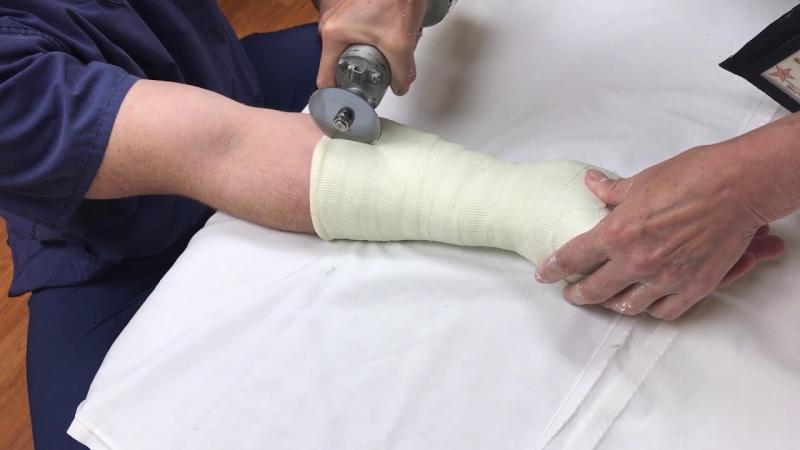Cast saw devices have become indispensable tools in modern orthopedic and emergency medical care. Designed specifically for the safe and efficient removal of plaster or fiberglass casts, these powered instruments incorporate precision engineering to minimize patient discomfort and prevent injury. Over the years, advancements in their technology have transformed the way medical professionals handle cast removal, resulting in enhanced safety, improved usability, and faster treatment times.
Understanding the Design and Functionality of Modern Cast Saw Devices
Cast saw devices operate using a specialized oscillating blade that vibrates at a high frequency without rotating, allowing them to cut through hard casting materials such as plaster or fiberglass without damaging the underlying skin or tissue. Unlike traditional saws, the oscillating blade's oscillation reduces the risk of laceration, making it safer in clinical settings.
The ergonomic design of these devices enhances maneuverability, allowing medical professionals to access hard-to-reach areas easily. Features such as variable speed controls enable precise adjustments based on the material type and thickness of the cast, optimizing cutting efficiency. Most modern cast saws come with anti-vibration handles to reduce hand fatigue during prolonged procedures, improving operator comfort and control.
Key Advantages and Clinical Applications of Cast Saw Devices in Healthcare
The primary advantage of cast saw devices is their ability to swiftly and safely remove orthopedic casts without inflicting harm on patients. This capability is critical in post-fracture care when timely cast removal is necessary to evaluate healing progress or transition to alternative treatments such as splints or braces.
Additionally, cast saws are widely used in emergency rooms and trauma centers where rapid access to injured limbs is essential. The oscillating action of the blade significantly reduces the risk of pressure sores or burns, conditions that could arise from prolonged cast application or improper removal techniques. Medical staff rely on these devices to conduct routine removal as well as urgent interventions such as managing compartment syndrome or dressing changes.
Furthermore, pediatric care settings have benefited from specialized cast saws designed with quieter motors and less vibration, reducing anxiety in young patients during cast removal.
Exploring and Innovations in Cast Saw Device Technology
Recent years have witnessed a surge in innovation within the cast saw segment, driven by the demand for higher precision, safety, and usability. Digital enhancements such as integrated LED lighting systems provide superior visibility during cast cutting, drastically reducing the chances of accidental injury. Some models incorporate sensors that detect blade temperature to prevent overheating, a key factor in ensuring patient safety.
Another evolving trend is the increasing adoption of cordless cast saw devices powered by rechargeable lithium-ion batteries. These cordless variants offer greater flexibility and ease of use, particularly in mobile healthcare environments and during home care treatments. The improved battery technology ensures longer operation time without compromising on cutting power.
Manufacturers are also focusing on sustainable materials and eco-friendly production processes to meet global regulatory standards and reduce environmental impact. This shift resonates with healthcare providers committed to green practices.
How to Navigate Detailed Cast Saw Device Research Reports
For medical device suppliers, healthcare administrators, and investors eager to delve into the latest dynamics of the cast saw market, authoritative market research reports provide comprehensive insights into competitive landscapes, regional demand patterns, technological innovations, and regulatory challenges. These reports aggregate data on key players, sales channels, pricing strategies, and future outlooks.
Such reports often segment the market based on product types — such as corded versus cordless saws — and applications, facilitating targeted analysis. They also analyze end-user sectors, encompassing hospitals, clinics, and outpatient centers, helping stakeholders understand demand drivers and potential growth opportunities.
Professionals seeking detailed quantitative data and forecast trends can utilize these reports to make informed decisions regarding investment, product development, and market entry strategies.
Purchasing Considerations and Sourcing High-Quality Cast Saw Devices
When considering procurement of cast saw devices, healthcare providers must evaluate several factors to ensure optimal performance and safety. Critical parameters include blade quality, motor power, ergonomic features, ease of maintenance, and compliance with medical device regulations.
Vendors typically offer devices with varying specifications tailored to different budgetary constraints and clinical needs. Prices can vary significantly based on brand reputation, technological sophistication, and additional features such as dust collection systems or blade compatibility.
Medical facilities looking to source trusted cast saw devices should review supplier certifications, after-sales service agreements, and warranty policies. Bulk purchasing options and flexible leasing models are often available to accommodate institutional budgets.
Impact of Advanced Cast Saw Devices on Patient Outcomes and Healthcare Efficiency
The integration of cutting-edge cast saw devices has contributed positively to overall patient outcomes by reducing procedure times and minimizing procedural anxiety. Faster and safer cast removal reduces the incidence of soft tissue injuries and facilitates timely clinical evaluations, thereby accelerating rehabilitation processes.
Healthcare providers benefit from streamlined operations enabled by user-friendly devices that require minimal training and maintenance. This efficiency allows for higher patient throughput in busy orthopedic or emergency units.
Moreover, the adoption of advanced cast saw technology aligns with broader healthcare goals such as enhancing patient safety protocols and optimizing clinical workflows, supporting sustainable healthcare delivery frameworks.
Get This Report In Japanese language: 鋸歯状デバイス市場
Get This Report In Korean language: 캐스트 톱 장치 시장
Read more articles related to this industry:
Key Factors in Choosing a Medical Device Contract Manufacturer
About Author:
Ravina Pandya, Content Writer, has a strong foothold in the market research industry. She specializes in writing well-researched articles from different industries, including food and beverages, information and technology, healthcare, chemical and materials, etc. (https://www.linkedin.com/in/ravina-pandya-1a3984191)
#CastSawDevices#OrthopedicTools#SurgicalEquipment#FractureTreatment#MedicalDevices#HealthcareTechnology
